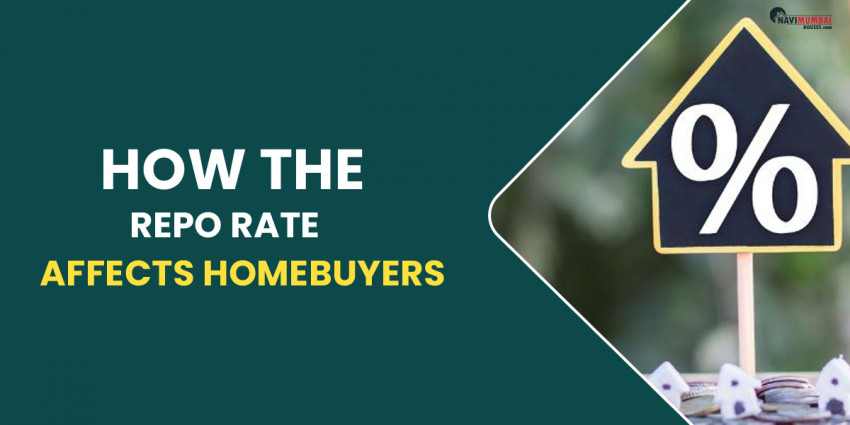
DEFINITION: Repo rate is the financing cost at which a country's public bank (in India, the Reserve Bank of India) credits cash to business banks in case of an absence of supporting. Money related specialists utilize the repo rate to coordinate augmentation.
Is it certified that you are really looking at level for lease in colaba?
Depiction: When there is advancement, public banks raise the repo rate to keep banks from acquiring from them. Eventually, this chops down how much cash open to the economy, which helps with ending improvement.
Expecting inflationary strains decline, the public bank embraces the conflicting with position. The liquidity change office merges the repo and turn repo rates.
WHAT DO REVERSE REPO RATE AND REPO RATE MEAN?
Repo Rate: This is the supporting cost that a country's public bank charges business banks for credits. The Reserve Bank of India (RBI), which is India's public bank, utilizes the repo rate to control the economy's liquidity. Repurchase choice or repurchase strategies are relative terms in banking. Right when cash is tight, business banks gain cash from the public bank, which is then repaid at the current repo rate. These transient credits are made open by the public bank as a compromise for protections like Treasury Bills or Government Bonds. The public bank utilizes this money related philosophy to decrease improvement or lift bank liquidity.
Right when it is fundamental to bind getting and direct expenses, the public power raises the repo rate. Obviously, the repo rate is chopped down when extra capital should impel market extension. A change in the repo rate in the end impacts public borrowings such home credits, EMIs, and so on since it powers business banks to pay higher financing costs for the cash that is gotten to them. Different cash related and speculation instruments are by idea dependent upon the repo rate, from the better business banks charge on credits than the advantages on stores.
Repo Rate in Reverse: This is the expense a country's public bank charges its business banks to store their excess finances there. To control the improvement of cash keeping watch, the public bank (in India, the RBI) besides utilizes a financial technique known as the inverse repo rate. In the midst of need, a country's public bank will get cash from private banks and pay them premium at the constant chitchat repo rate. The RBI's inverse repo rate is regularly more sensible than the repo rate at a specific time. Switch repo rate is utilized to control pay keeping watch, while repo rate is utilized to control liquidity in the economy.
To urge business banks to store cash with the public bank and get pay when there is improvement in the economy, the RBI raises the inverse repo rate. In result, this wipes out an excess of cash from the market and chops down how much money that is open for getting by the general individuals.
The repo rate is a huge instrument for the financial controller to control improvement as well as helping keeps cash with crediting receptiveness. The RBI brings the repo rate up in instances of rising augmentation to keep banks from getting. Thus, the economy's liquidity at long last spoils, which in the end controls the high augmentation. An inversion method is utilized when expansion begins to decline. In this current situation, the repo rate is conveyed down to urge banks to acknowledge greater responsibility, which at last lifts the market's store and starts new speculation improvement.
Here it is major for see that the credit as such given by the RBI to the banks is just presented until additional notification use, and the banks buy their protections that at a fated cost were taken care of with the money related controller.
Key data on India's repo rate
• The RBI controls and sets the repo rate.
• Repo rates are a framework for diminishing expansion.
• Considering the repo rate, banks change the credit charges on adventure accounts and fixed stores.
• The inverse repo rate was the name of the repo rate before to October 2004.
Outline of financial framework: what's going on here?
Typically, the six-area Monetary Policy Committee of the RBI, which is driven by the lead delegate, meets to close the bank's money related technique and changes key development costs as per the condition of the economy. The money related blueprint survey likewise sums up the country's constant financial conditions and subtleties the current and approaching advances the RBI means to take to help the economy.
How do changes in the repo rate influence home credits?
Banks pay less for getting when the RBI diminishes the repo rate. It is accepted that banks would finally give this advantage to their clients. The financial business has lessened the repo rate by 200 explanation places during the beyond a year, which has assisted with settling client premium because of the Covid episode and its hostile results on the economy. To help clients, saves cash with having begun decreasing the subsidizing costs on home advances. The best bank in the nation, State Bank of India, has cut the yearly rate (APR) on its repo rate-related home credits to a record-low 6.95 percent.
On the other hand, when the RBI switches its propelling rate around, home credit supporting costs besides increment. All around, to chop down their propelling rates. Likewise, no matter what the way that changes in the repo rate should be immediately reflected in the credit costs of monetary establishments, just expansions see quick transmission, and the RBI regularly needs to push banks to give the possible additions of lower rates to borrowers.
Because of banks' choice to attach the supporting costs on home credits to the repo rate in October 2019, future notions could unite quicker transmission of framework. Going before that, banks evaluated house credits utilizing interior propelling benchmarks such the unprecedented propelling rate, base rate, and periphery cost of assets based propelling rate (MCLR).
The MCLR system's little achievement overwhelmed the RBI, who directed banks to change to an outside crediting benchmark in 2018. This will make it reasonable for borrowers to acquire from changes in approach. Beginning there ahead, starting in October 2019, banks moved to the repo rate-related crediting framework. The MCLR system's neglected achievement terrified the RBI, who directed banks to change to an outside crediting benchmark in 2018. This will make it practical for borrowers to acquire from changes in approach.
Key data on home credits with a repo rate
Purchasers who expect out a home recognition with repo rates or people who move from their constant home credits to it need to understand unambiguous pieces of information concerning these credits.
Speedier transmission: Any developments to the repo rate will clearly be reflected in your EMI use amazingly more right away. With repo-rate related house credits, borrowers could expect a widely speedier progress forward toward their credit rates. Additionally, the rate-setting process for such credits will be more open, which ought to give borrowers more affirmation while looking over their improvement supporting costs.
How much extra better that banks will at last add than the repo rate on home credits will also be picked. The most practical house credit open right eventually is at 7%, which is a three rate point contrast from the repo rate, which is as of now at 4%.






